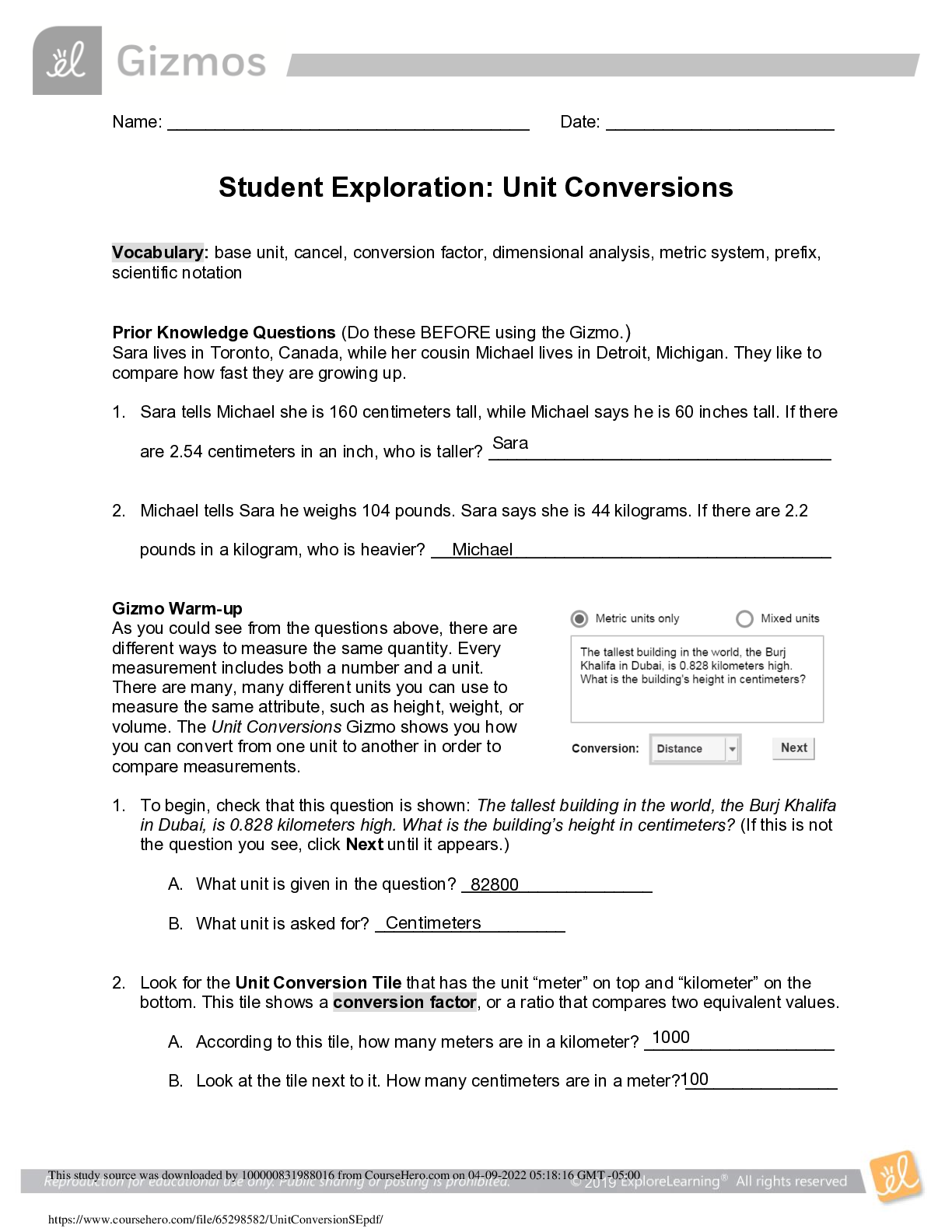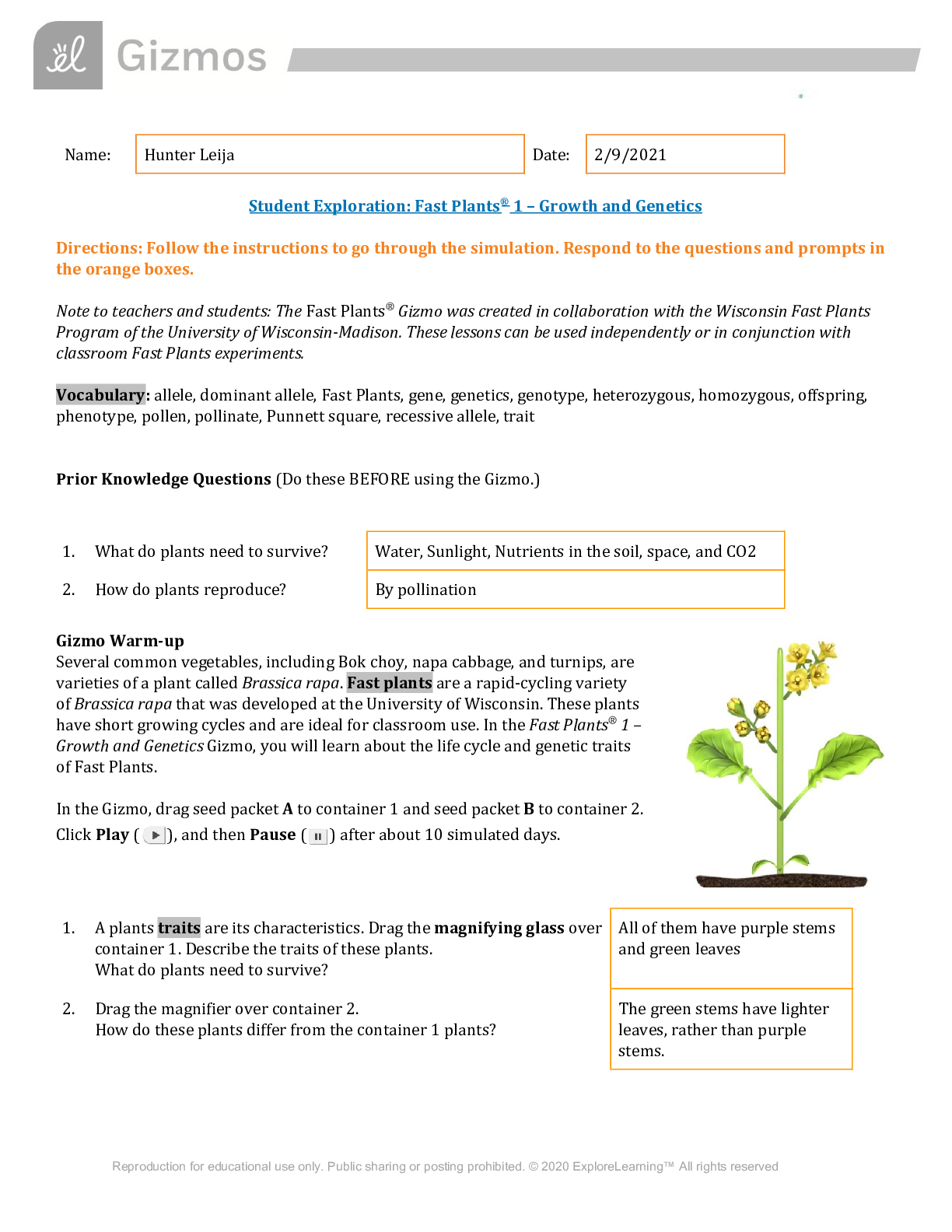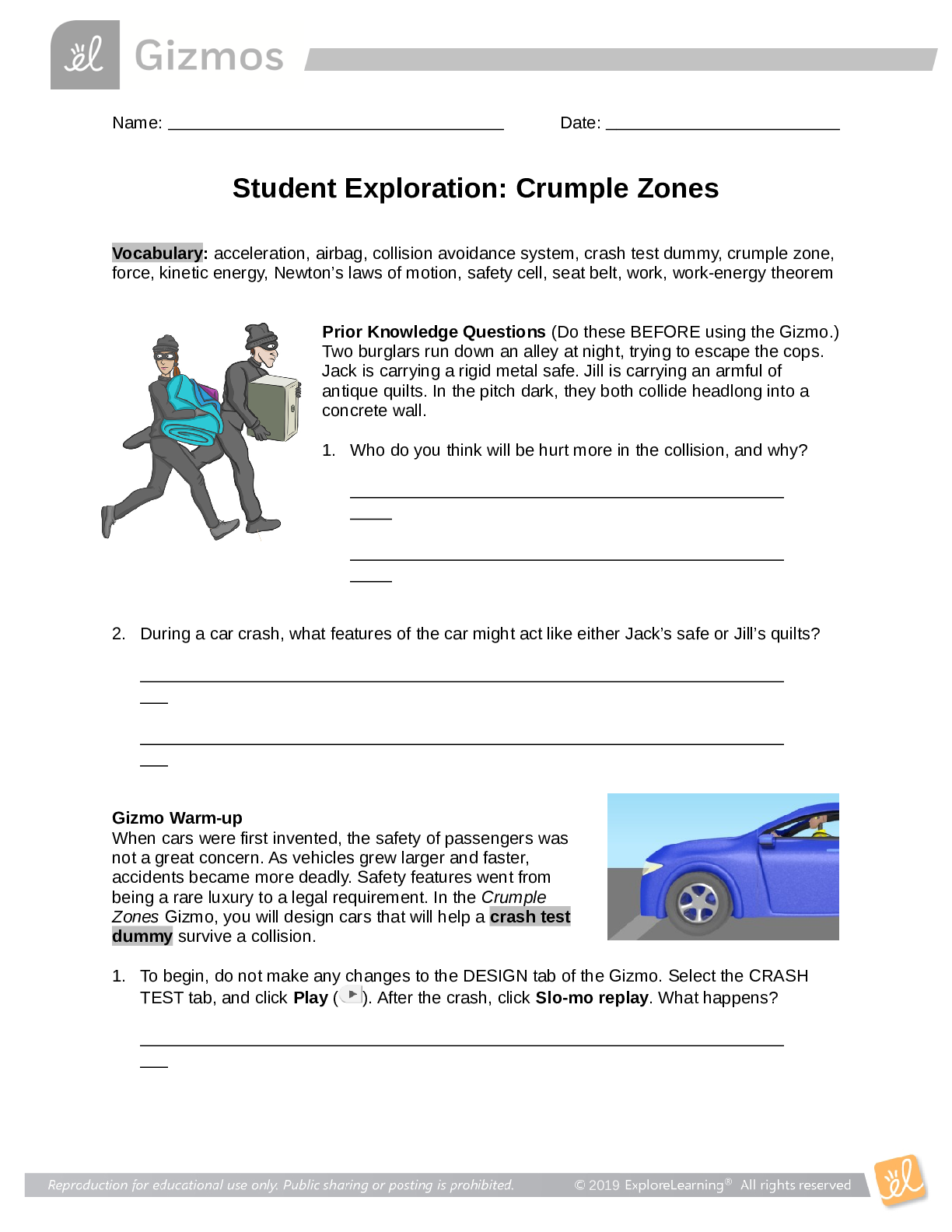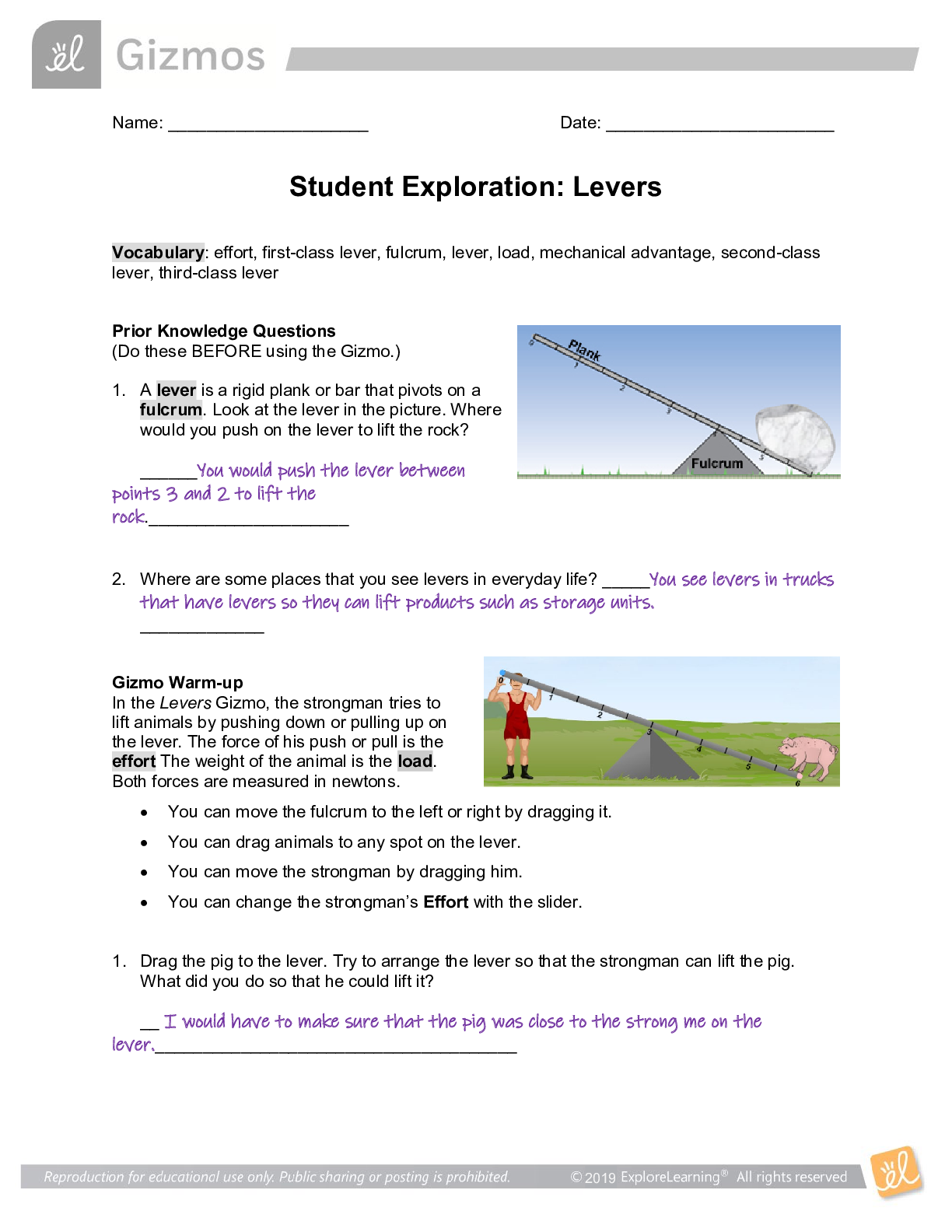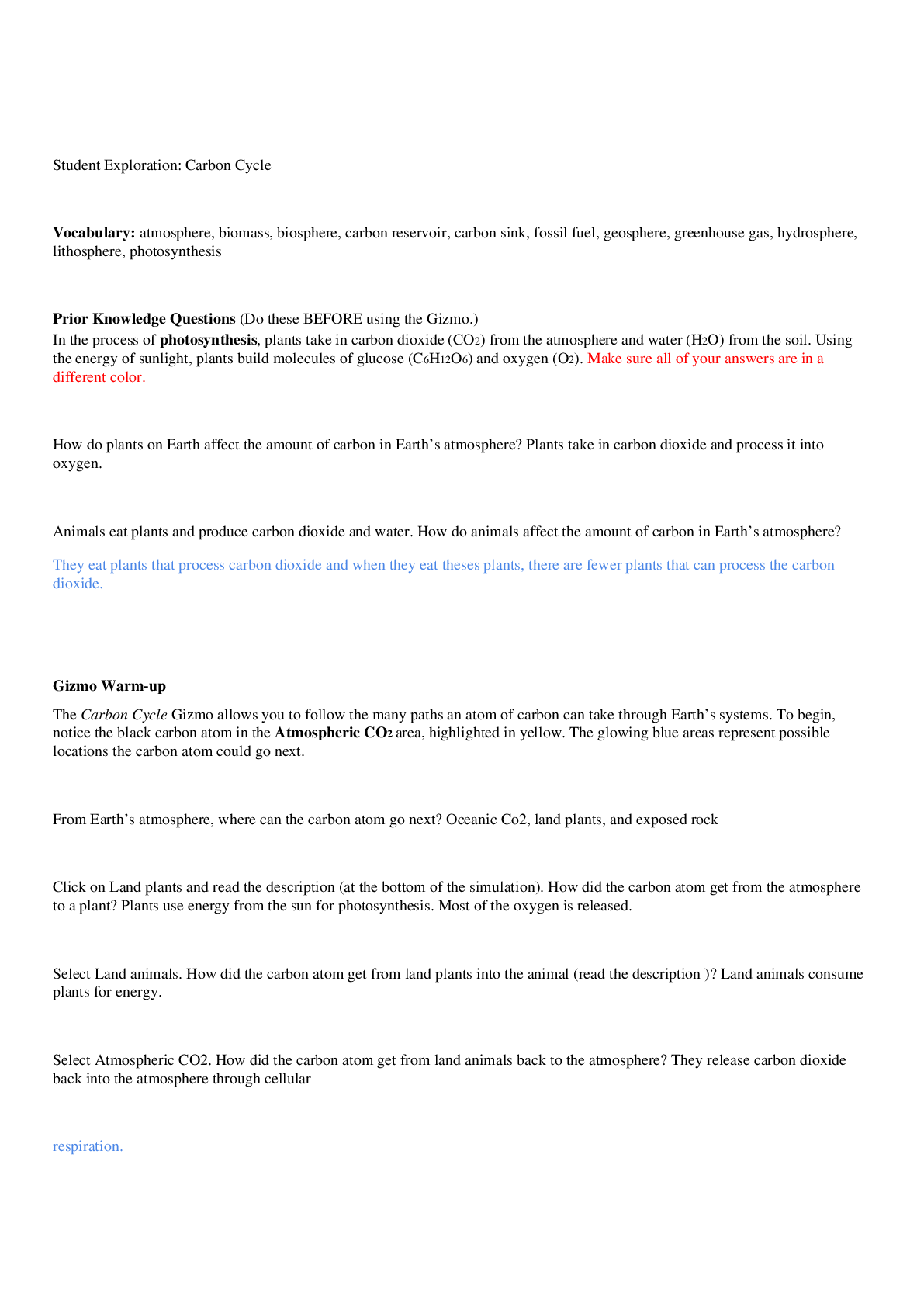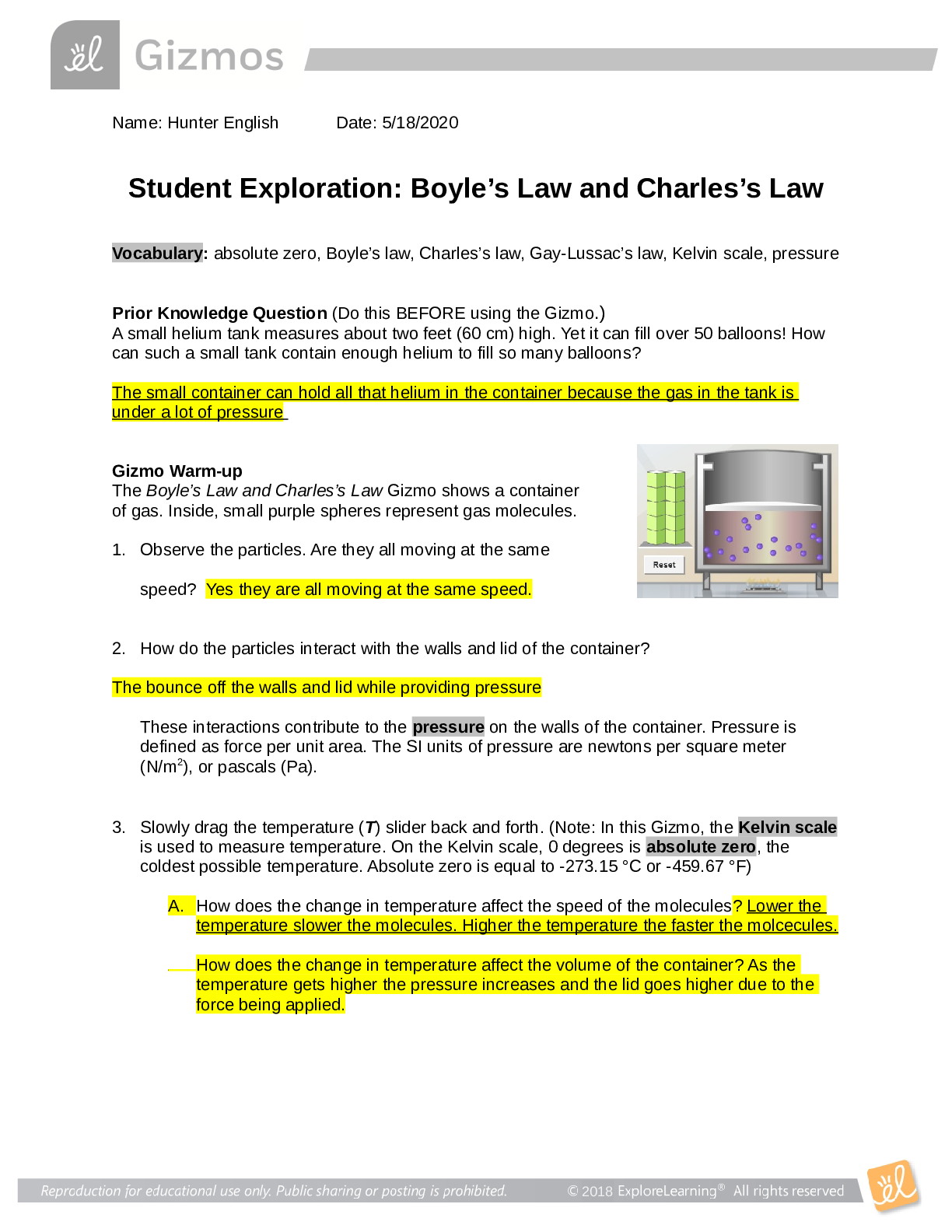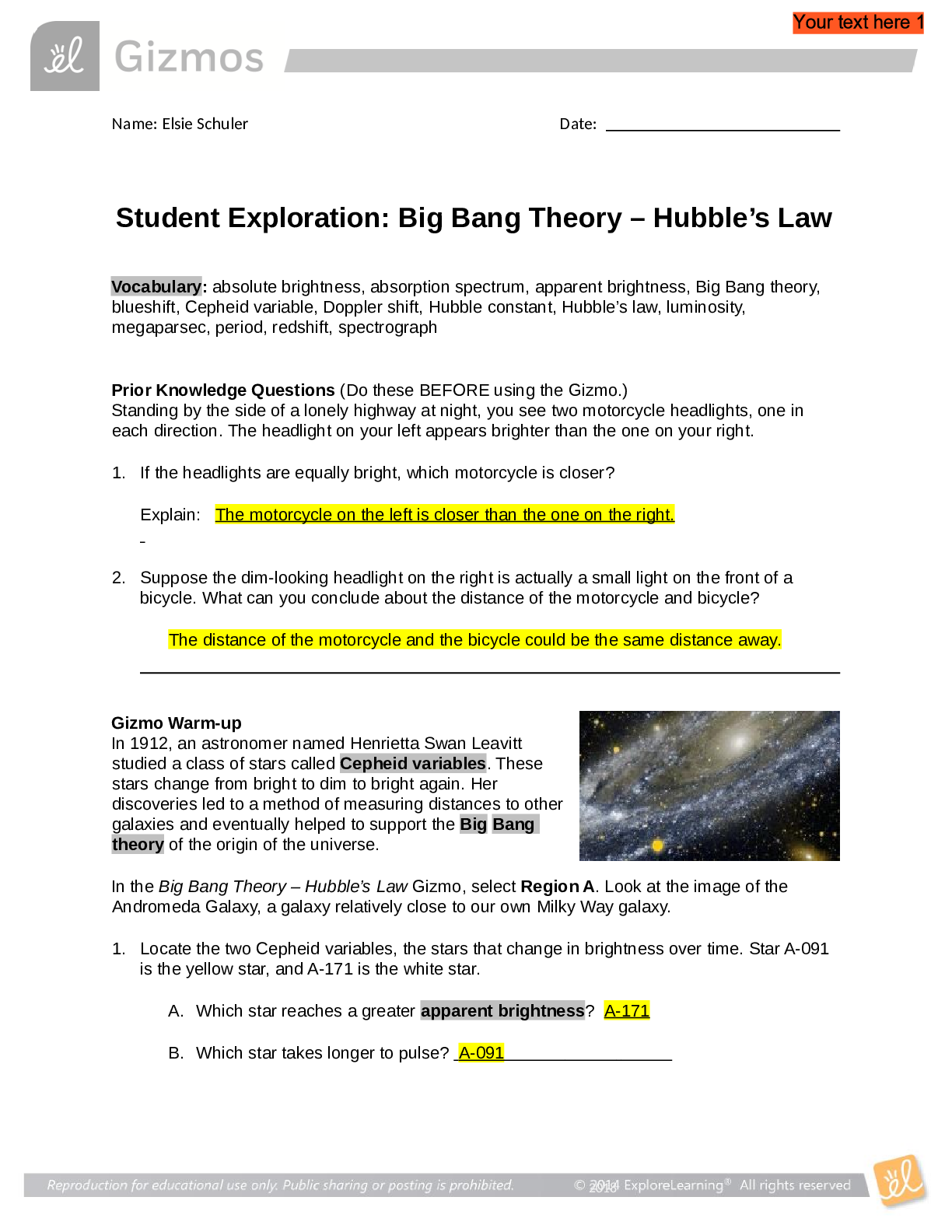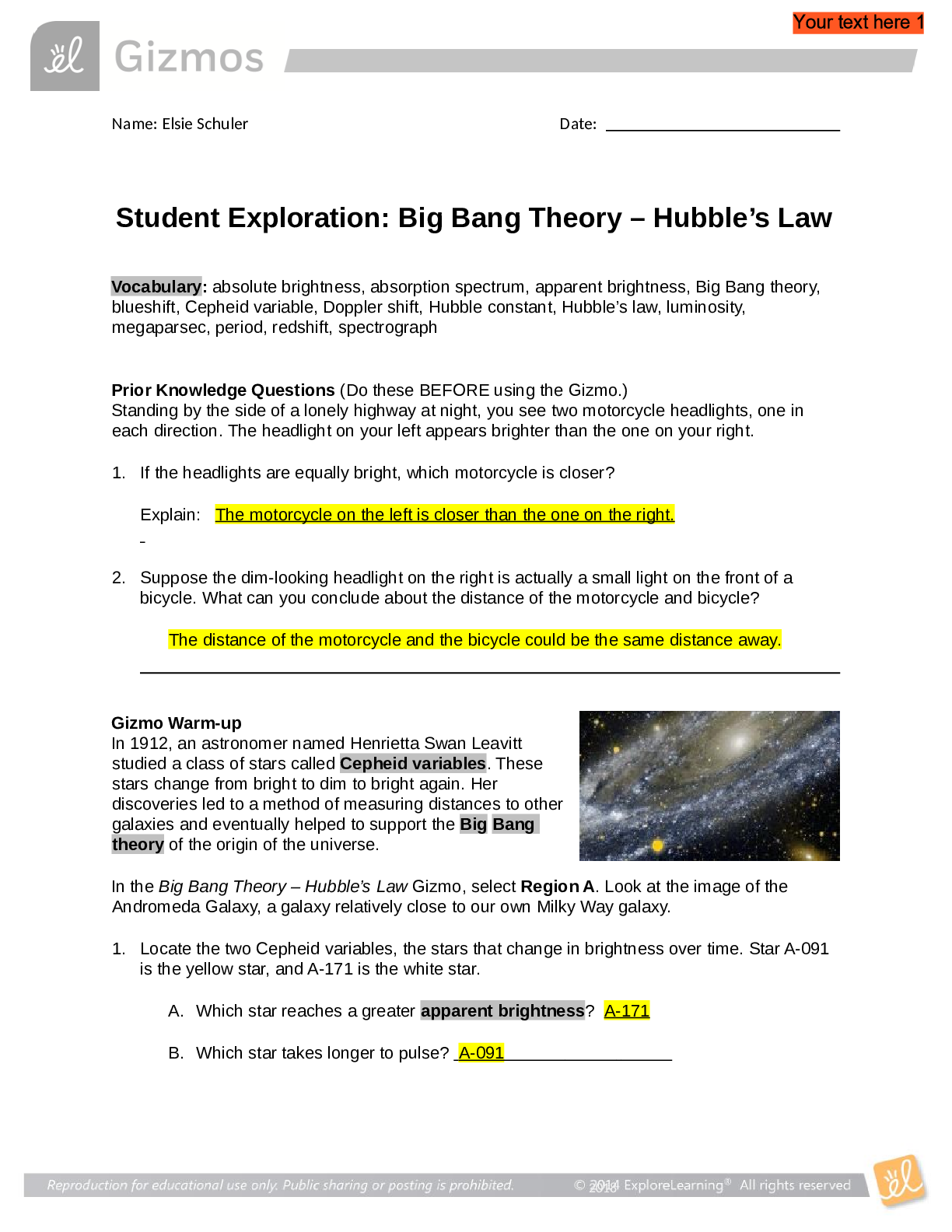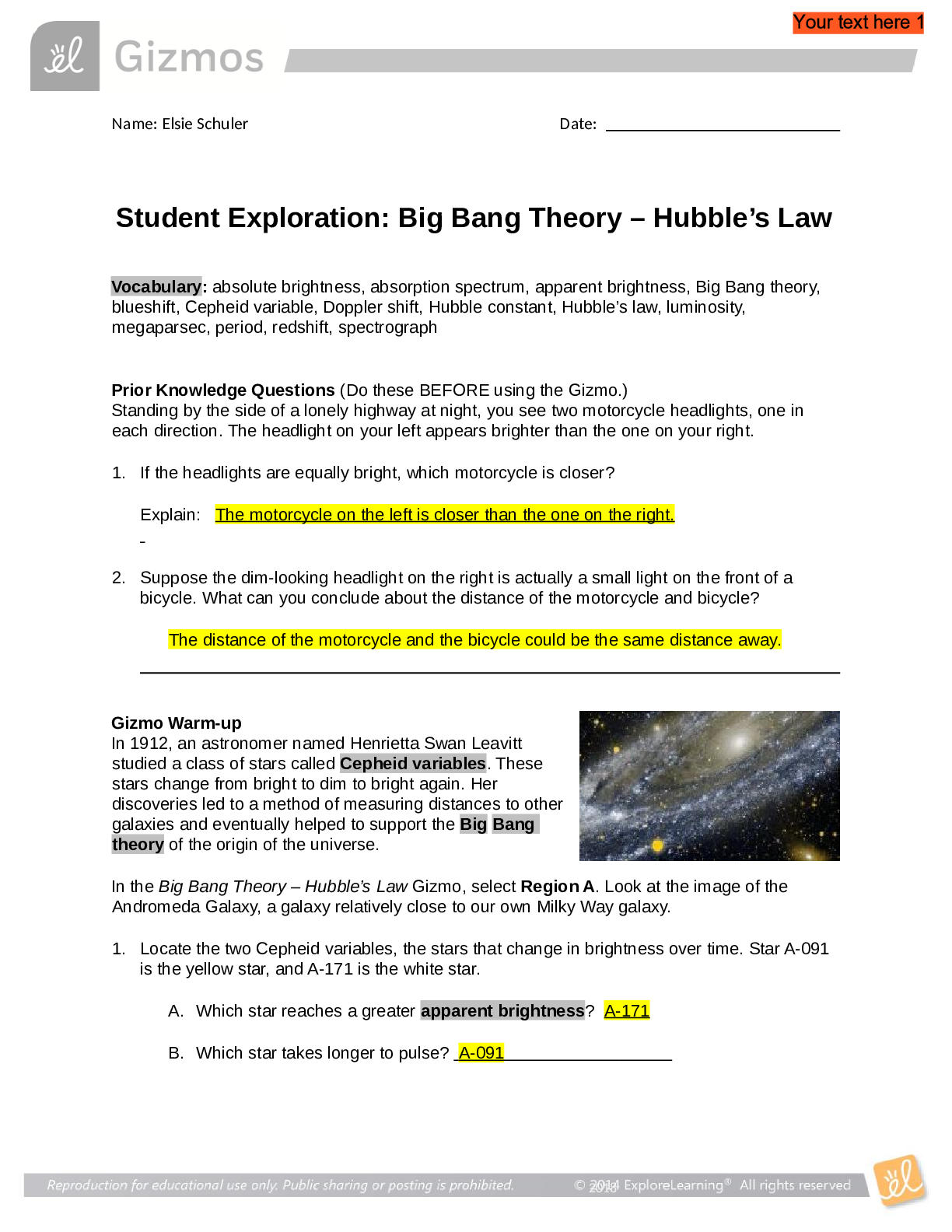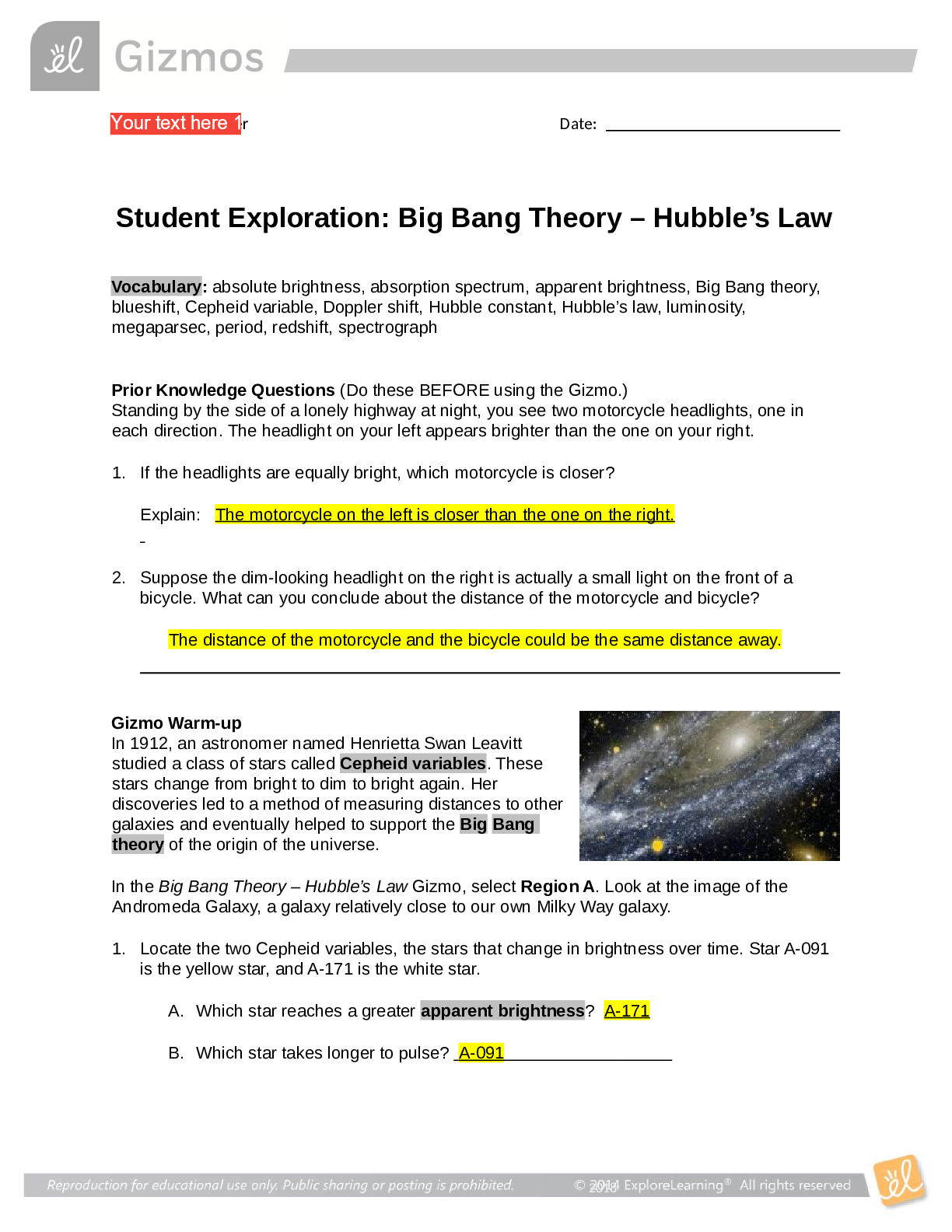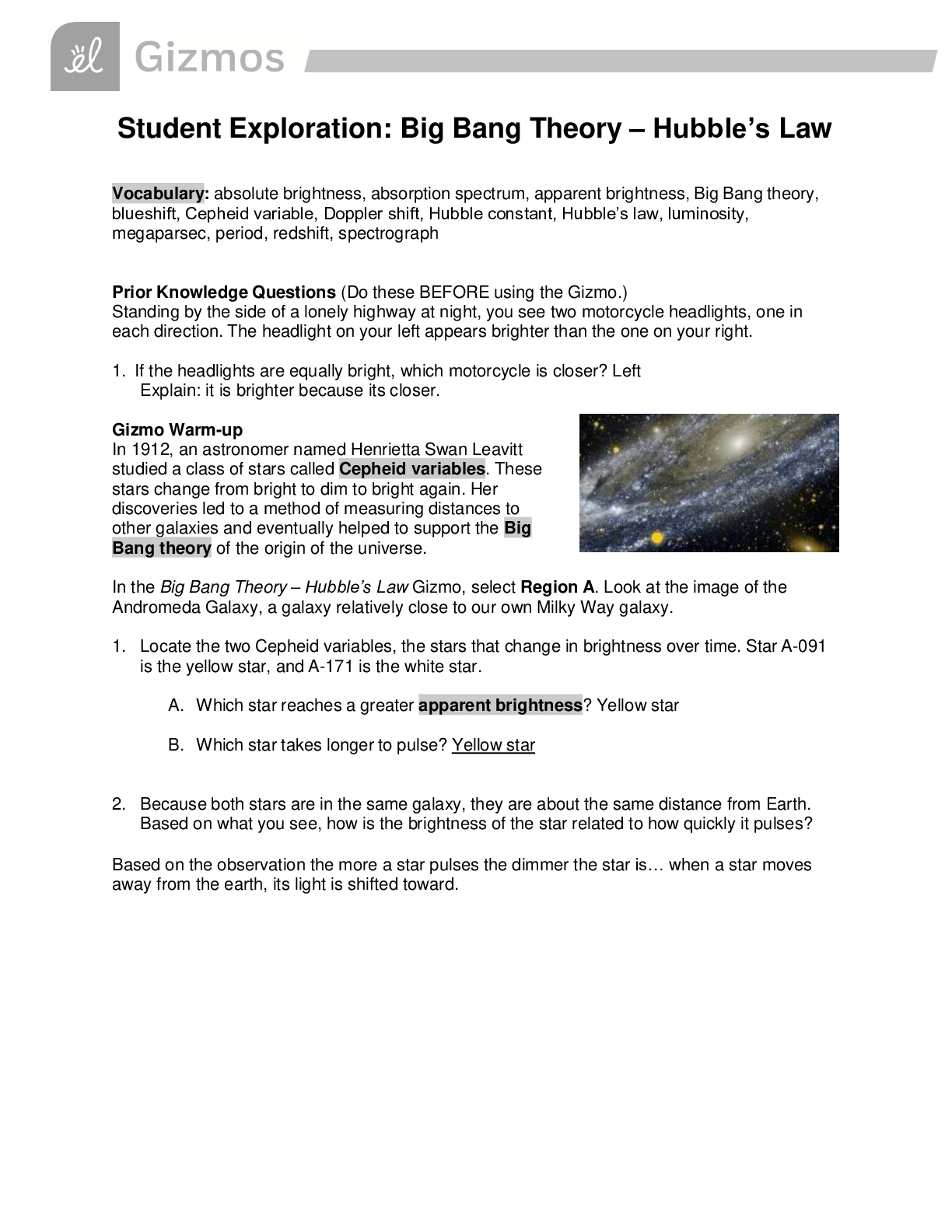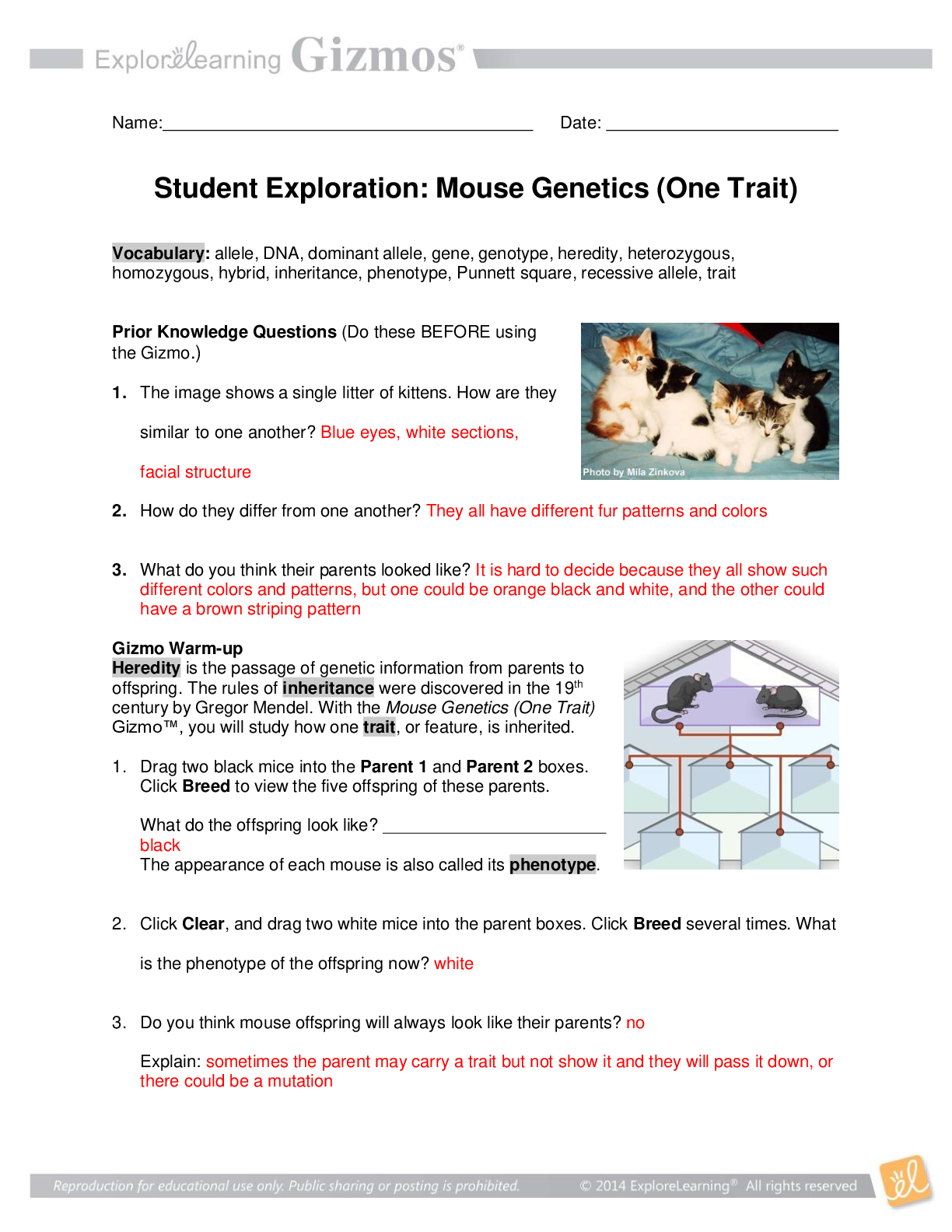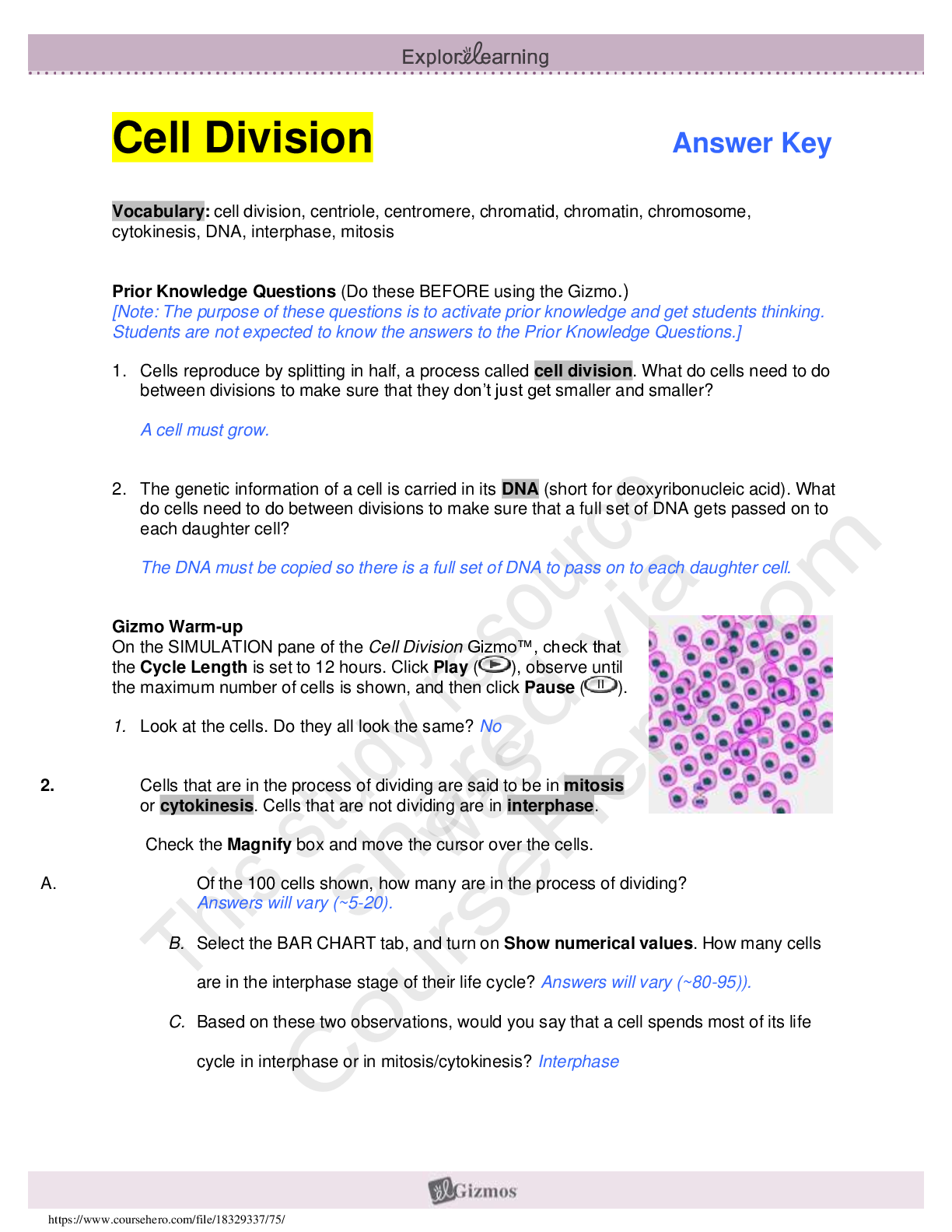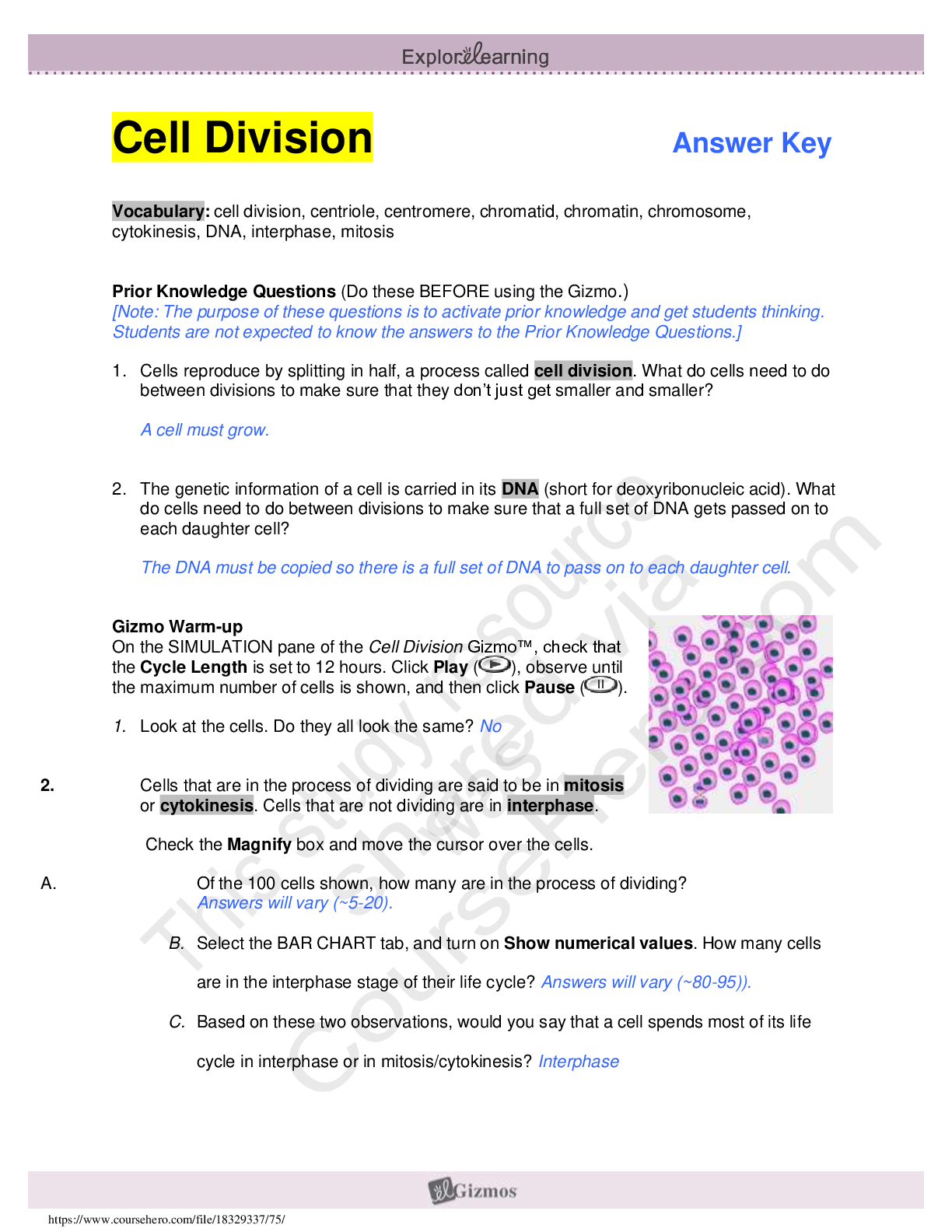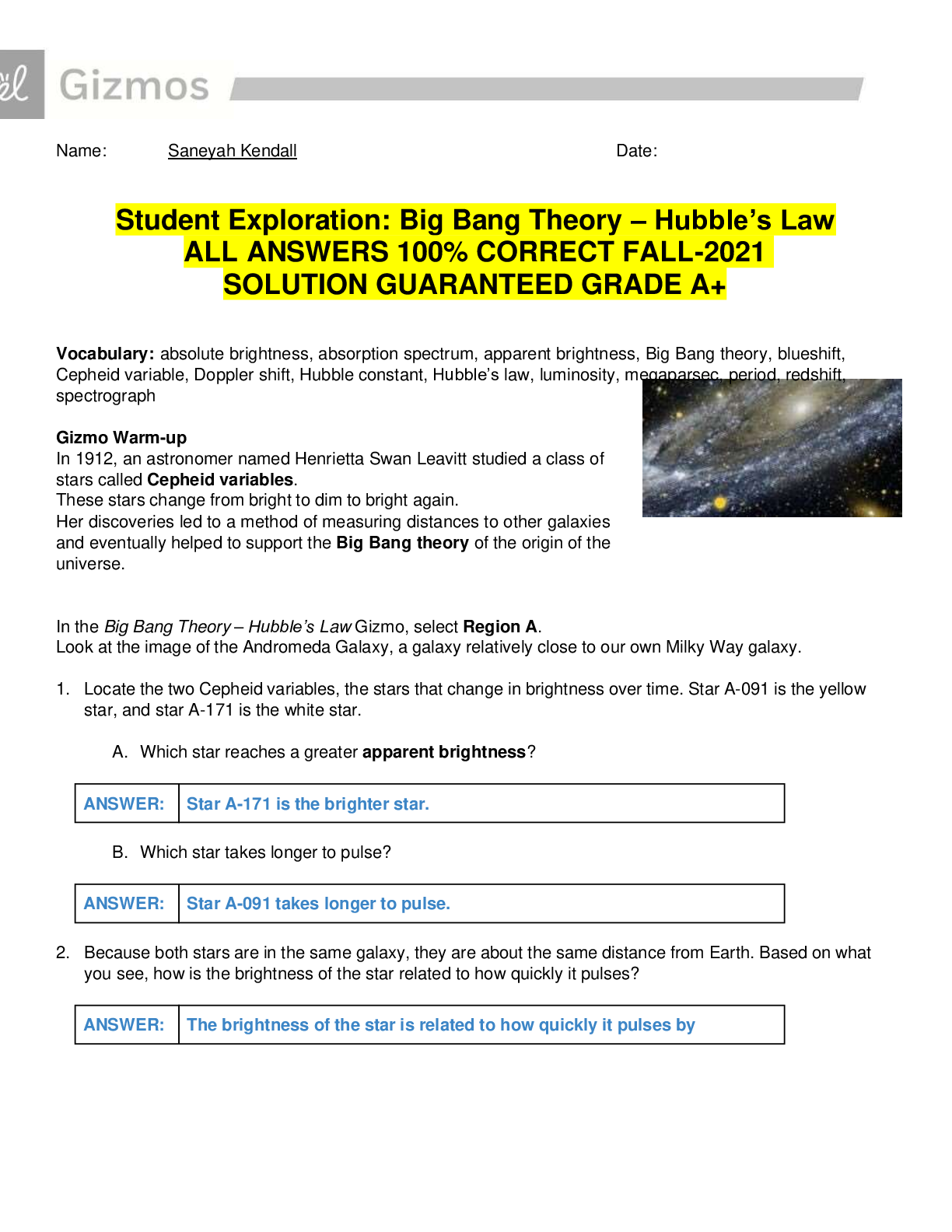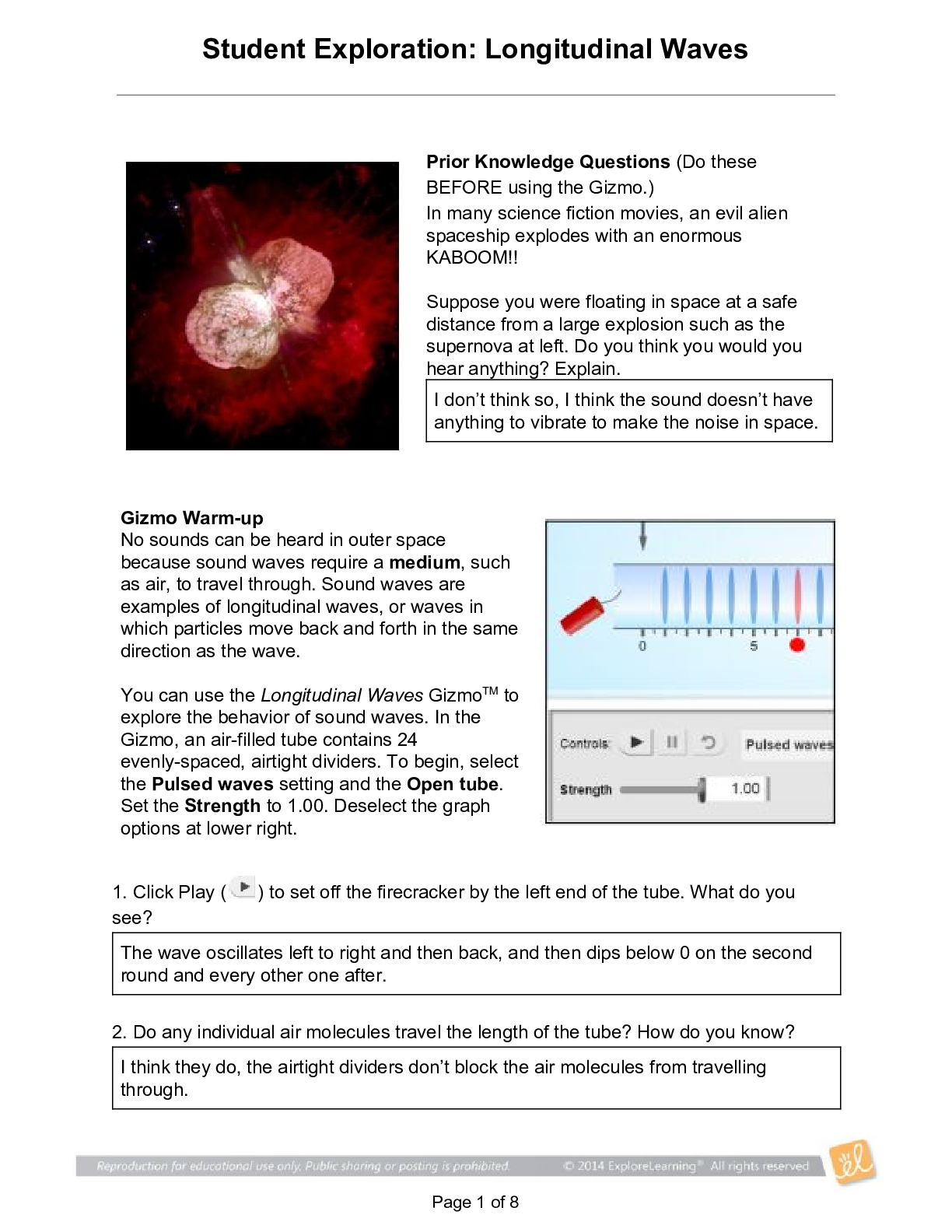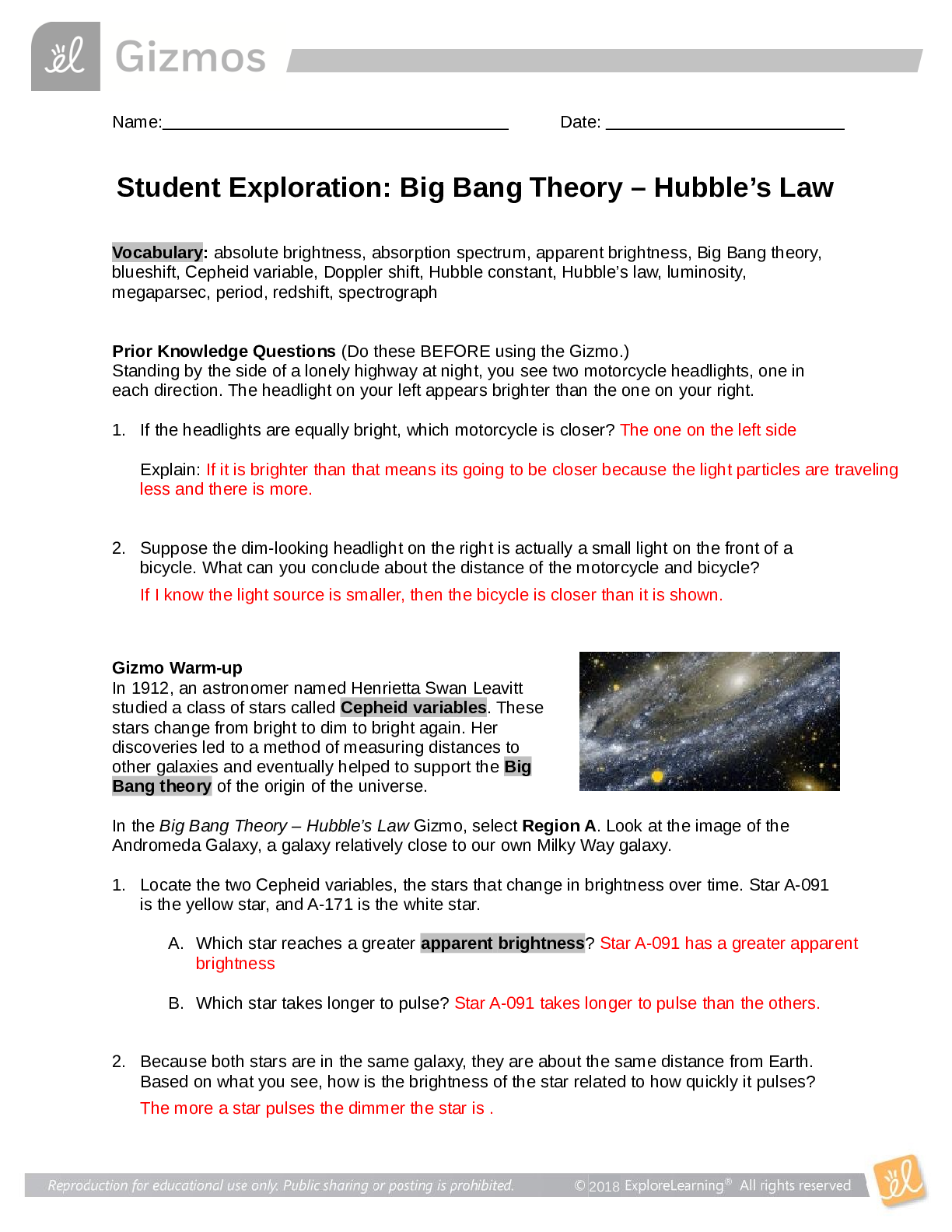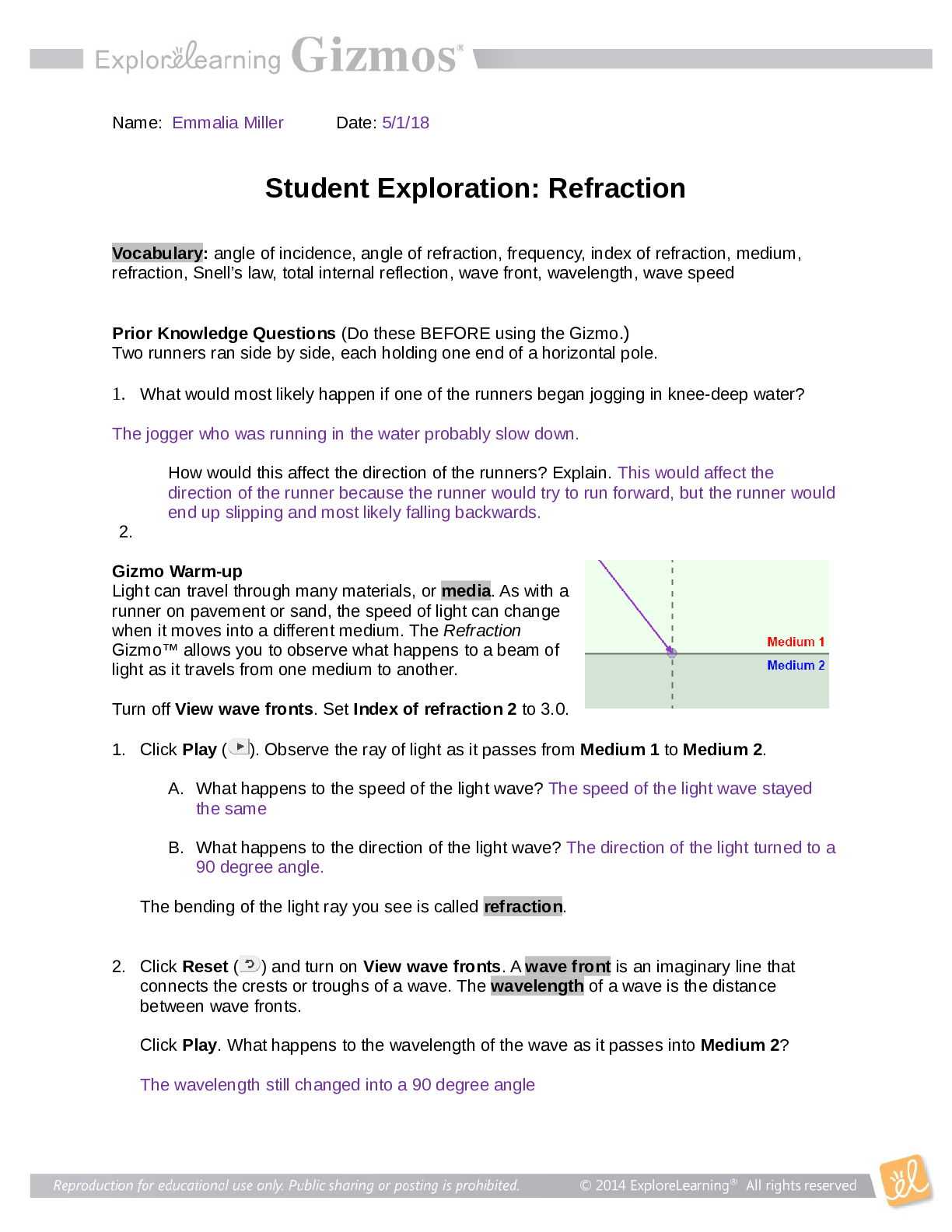Stephani DeBise - Carbon Cycling GIZMO Exam (Elaborations) Graded A+
Document Content and Description Below
Vocabulary: atmosphere, biomass, biosphere, carbon reservoir, carbon sink, fossil fuel, geosphere, greenhouse gas, hydrosphere, lithosphere, photosynthesis Prior Knowledge Questions (Do these BEFORE ... using the Gizmo.) In the process of photosynthesis, plants take in carbon dioxide (CO2) from the atmosphere and water (H2O) from the soil. Using the energy of sunlight, plants build molecules of glucose (C6H12O6) and oxygen (O2). 1. How do plants on Earth affect the amount of carbon in Earth’s atmosphere? Plants affect the amount of carbon in earths atmosphere by decrease. 2. Animals eat plants and produce carbon dioxide and water. How do animals affect the amount of carbon in Earth’s atmosphere? Animals affect the amount of carbon in earth’s atmosphere by increase Gizmo Warm-up The Carbon Cycle Gizmo™ allows you to follow the many paths an atom of carbon can take through Earth’s systems. To begin, notice the black carbon atom in the Atmospheric CO2 area, highlighted in yellow. The glowing blue areas represent possible locations the carbon atom could go next. 1. From Earth’s atmosphere, where can the carbon atom go next? From Earths atmosphere, the carbon atom can go next to Oceanic Co2 because carbon dioxide dissolves in cold ocean surface waters. The colder the water, the more CO2 can be dissolved. A large amount of dissolved CO2 is contained in the deep ocean. 2. Click on Land plants and read the description. How did the carbon atom get from the atmosphere to a plant? The carbon atom gets from the atmosphere to a plant from plants using the energy of sun to form glucose and oxygen from carbon dioxide and water. The glucose is used for energy and build plant tissue, and most of the oxygen is released. 3. Select Land animals. How did the carbon atom get from land plants into the animal? The carbon atom got from land plants into the animals from the animals eating the plants. 4. Select Atmospheric CO2. How did the carbon atom get from land animals back to the atmosphere? The carbon atom got from land animals back to the atmosphere from animals and plants breaking down glucose to produce energy which releases carbon dioxide and water into the atmosphere. Introduction: Earth can be divided into four systems. The atmosphere is the air above Earth’s surface. The hydrosphere is composed of all of Earth’s water. The geosphere is the rocky, non-living part of Earth. The biosphere consists of all living things, including people. Some scientists use the term “anthroposphere” to describe everything made or modified by humans. This study source was downloaded by 100000796615030 from CourseHero.com on 09-13-2021 03:52:37 GMT -05:00 Question: How does carbon move between the atmosphere, hydrosphere, biosphere, and geosphere? https://www.coursehero.com/file/52395962/Carbon-Cycle-Gizmodocx/ Get the Gizmo ready: • Click Reset. Activity B: Human activities 1. Explore: Based on the Gizmo, explain how carbon can move from one system to another: Carbon can move from one system to another because it is managed by different chemical and physical processes. A. Describe at least two ways that carbon can get from a land plant to the atmosphere. - Animals and plants get rid of carbon dioxide gas through a process called respiration. - Carbon moves from fossil fuels to the atmosphere when fuels are burned. B. Describe at least two ways that carbon can get from the atmosphere to the hydrosphere. - When oxygen is present, aerobic respiration occurs, which releases carbon dioxide into the surrounding air or water. - 4 C. Can you find two ways that carbon can get from the ocean to the lithosphere? (The lithosphere is the rigid layer of the Earth, including the crust and part of the mantle.) D. Describe at least two ways that carbon can get from seashells to the atmosphere. 2. Explain: Use the Gizmo to create a path for carbon that begins and ends in the atmosphere. Fill in the steps in the path below. Then, label each location with the system it represents. Finally, summarize very briefly how the carbon atom got to that location. System Atmosphere Hydrosphere Biosphere Geosphere Atmosphere Carbon Path Atmospheric CO2 Oceanic Lithosphere Atmospheric Atmospheric CO2 How it got there Volcanoes, burning fossil fuels, and other sources. Carbon dioxide dissolves water Marine algee and plants remove carbon from water and the marine animals consume plants algee for energy Uneaten dead animals drift down to the oceans floor and become part of the sediments Introduction: Fossil fuels, such as coal, oil, and natural gas, formed over millions of years from the remains of ancient plants and animals. The burning of fossil fuels, as well as other human activities, increases the amount of carbon dioxide in the atmosphere. Question: How does human activity affect the carbon cycle? 1. Describe: Using the Gizmo, determine how coal and petroleum (oil) are formed. Describe the steps required to form each fuel from atmospheric CO2. Coal: This stuPdyestoruorlcee uwmas d: ownloaded by 100000796615030 from CourseHero.com on 09-13-2021 03:52:37 GMT -05:00 2. Explore: Natural gas is a mixture of methane (CH4), ethane (C2H6), and other gases. Find two ways that natural gas forms. List the steps of the two carbon pathways below: Path 1: Path 2: [Show More]
Last updated: 1 year ago
Preview 1 out of 5 pages
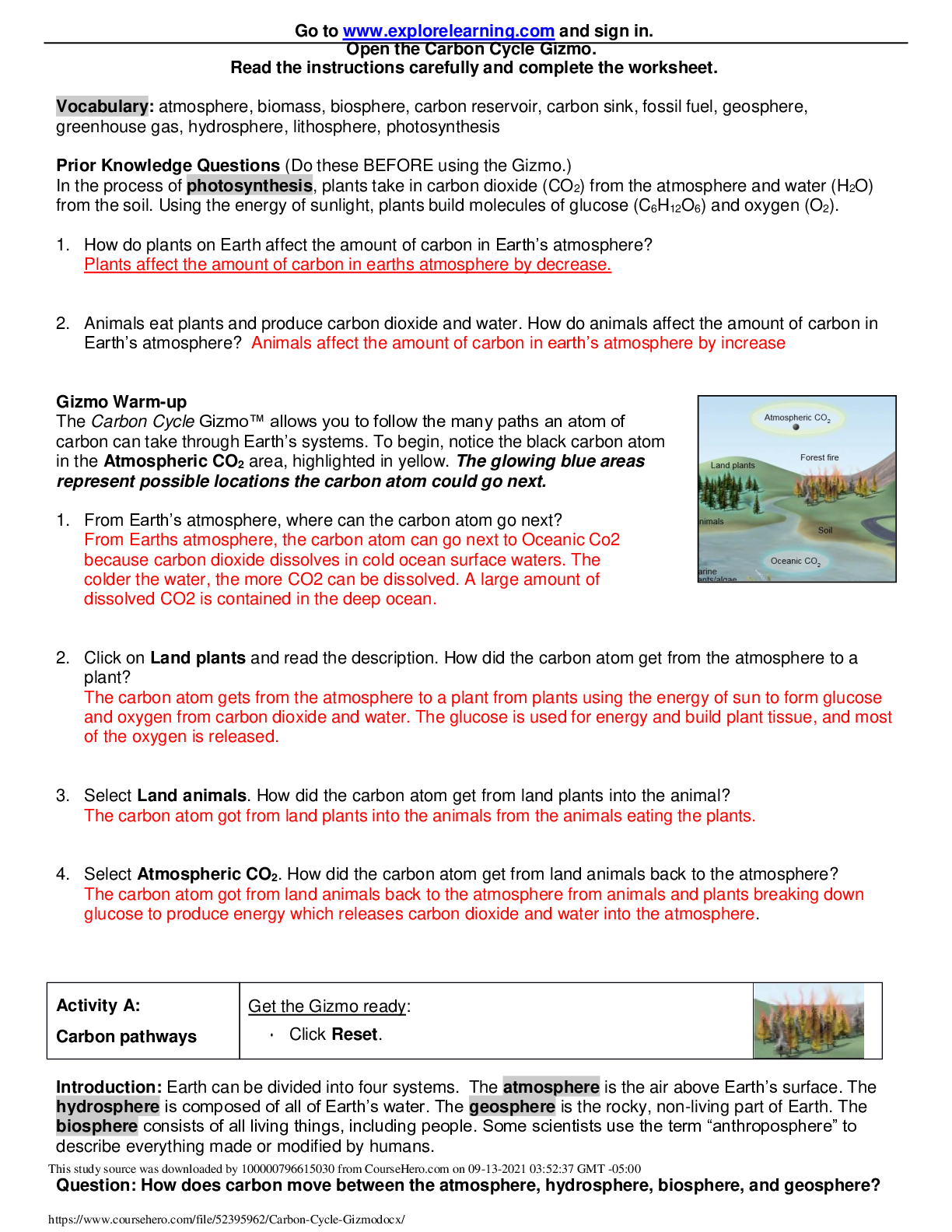
Reviews( 0 )
Document information
Connected school, study & course
About the document
Uploaded On
Sep 13, 2021
Number of pages
5
Written in
Additional information
This document has been written for:
Uploaded
Sep 13, 2021
Downloads
0
Views
92

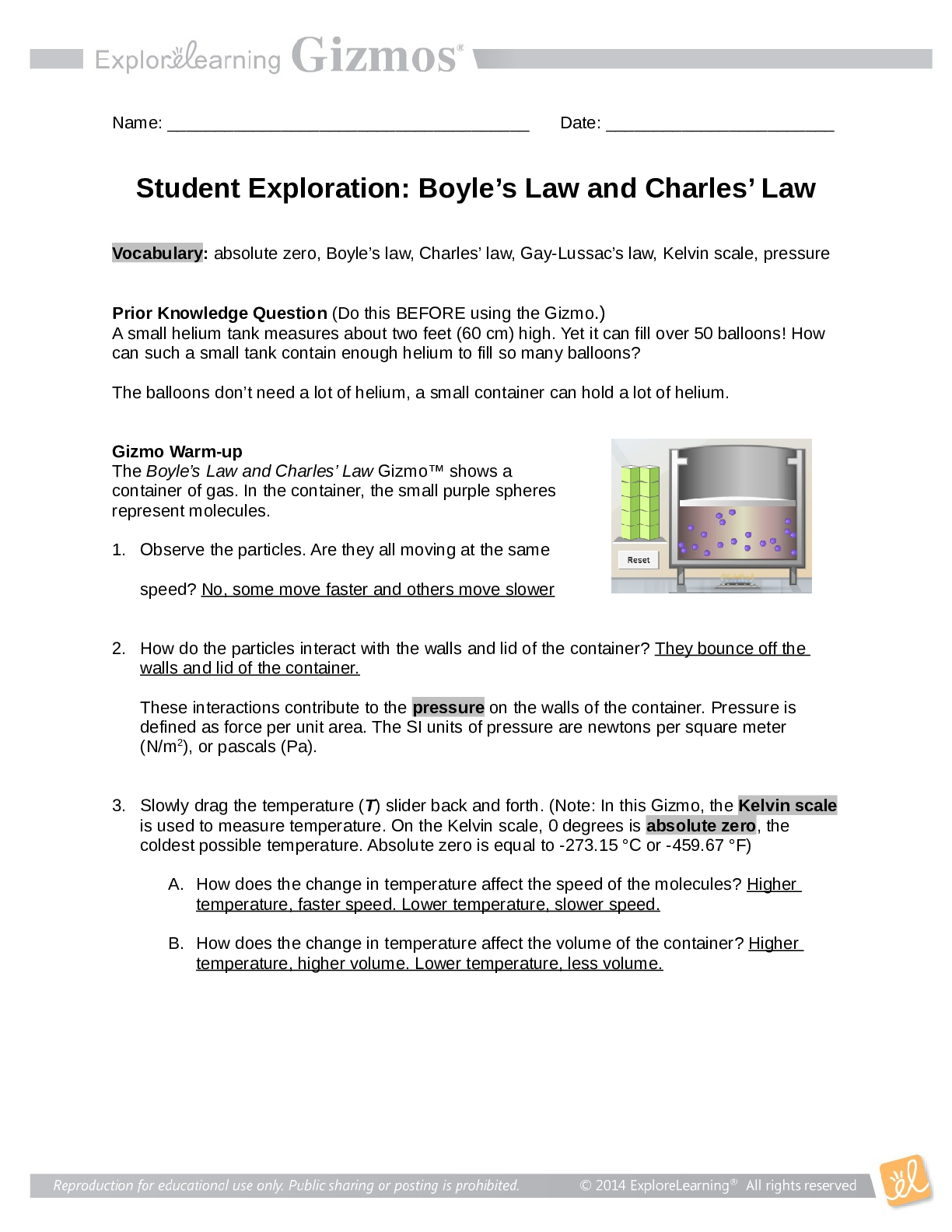



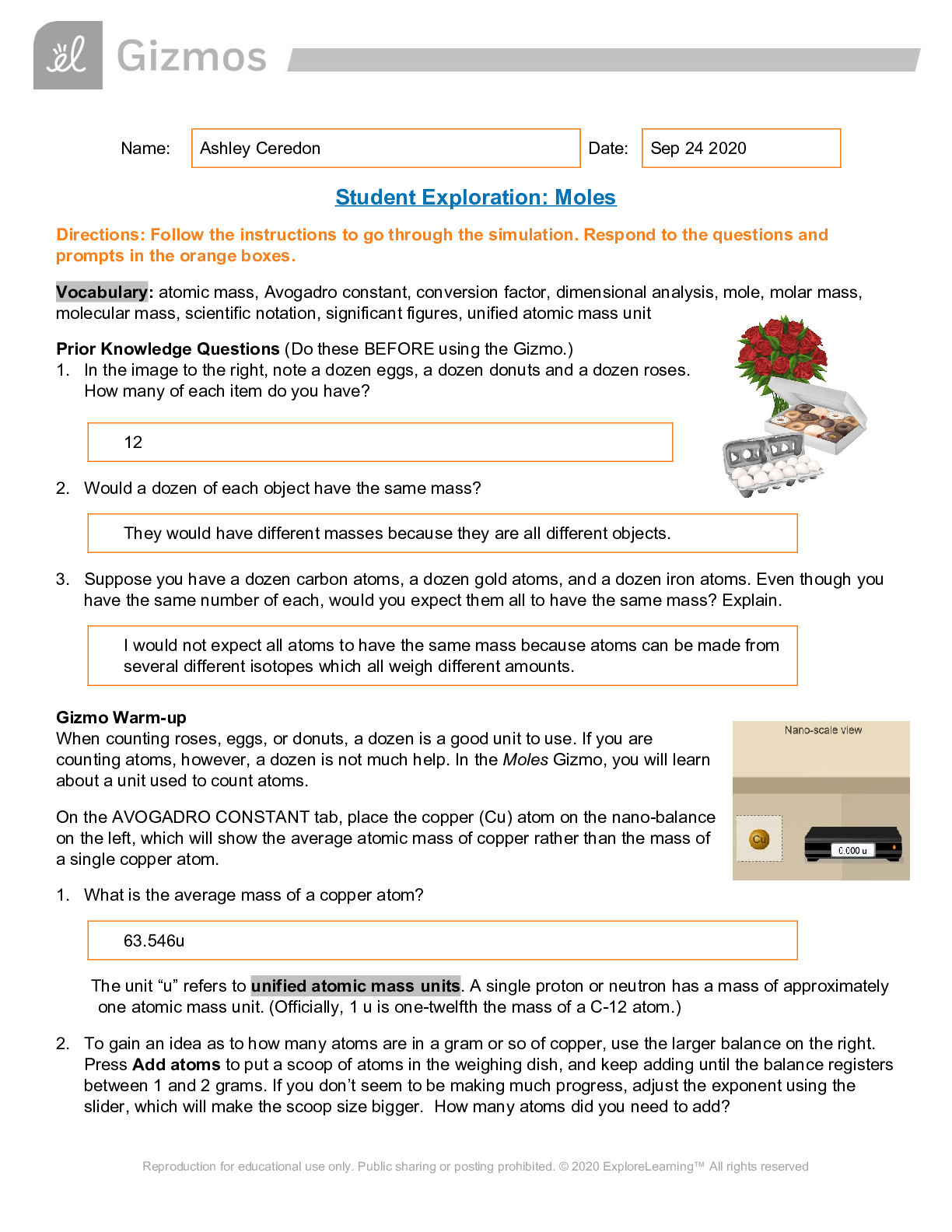
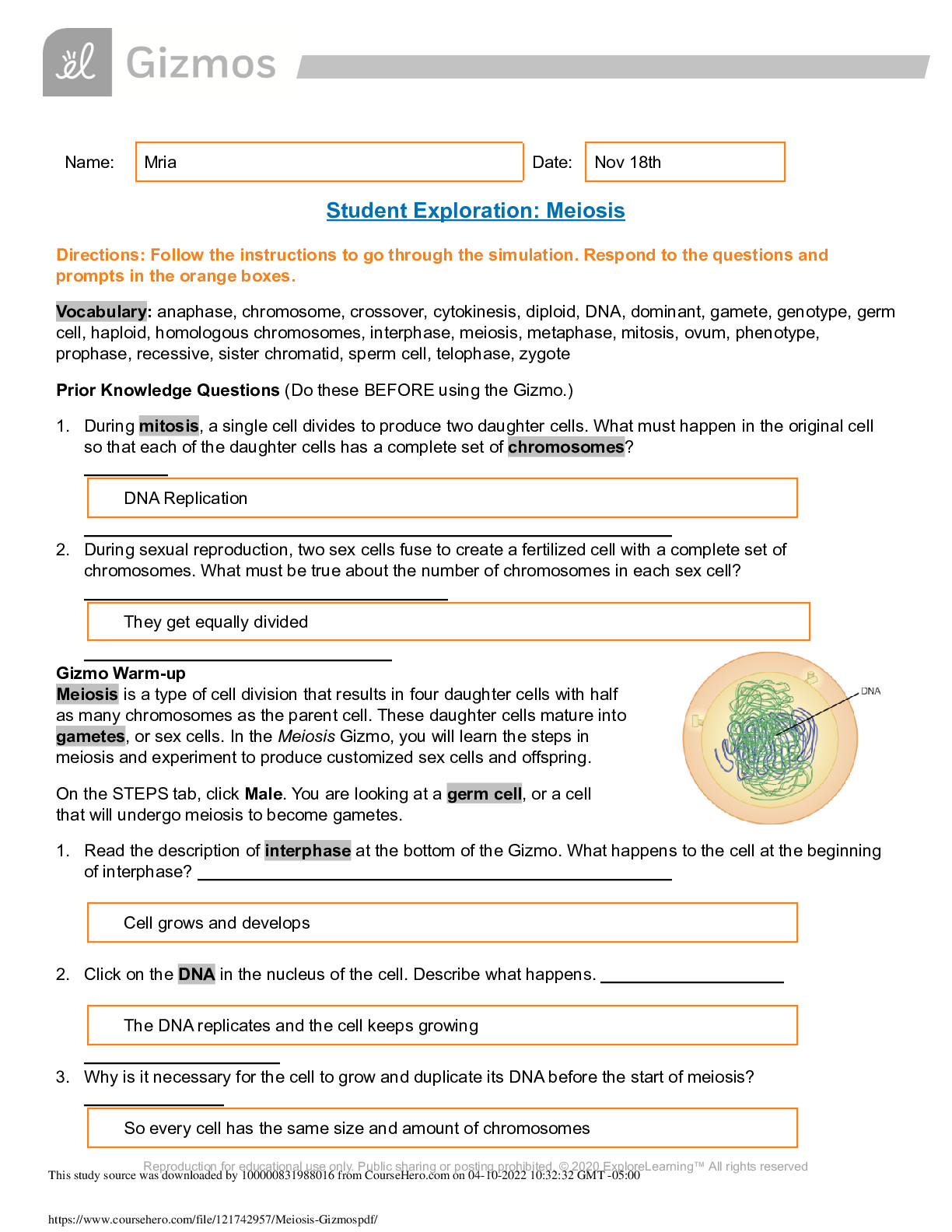


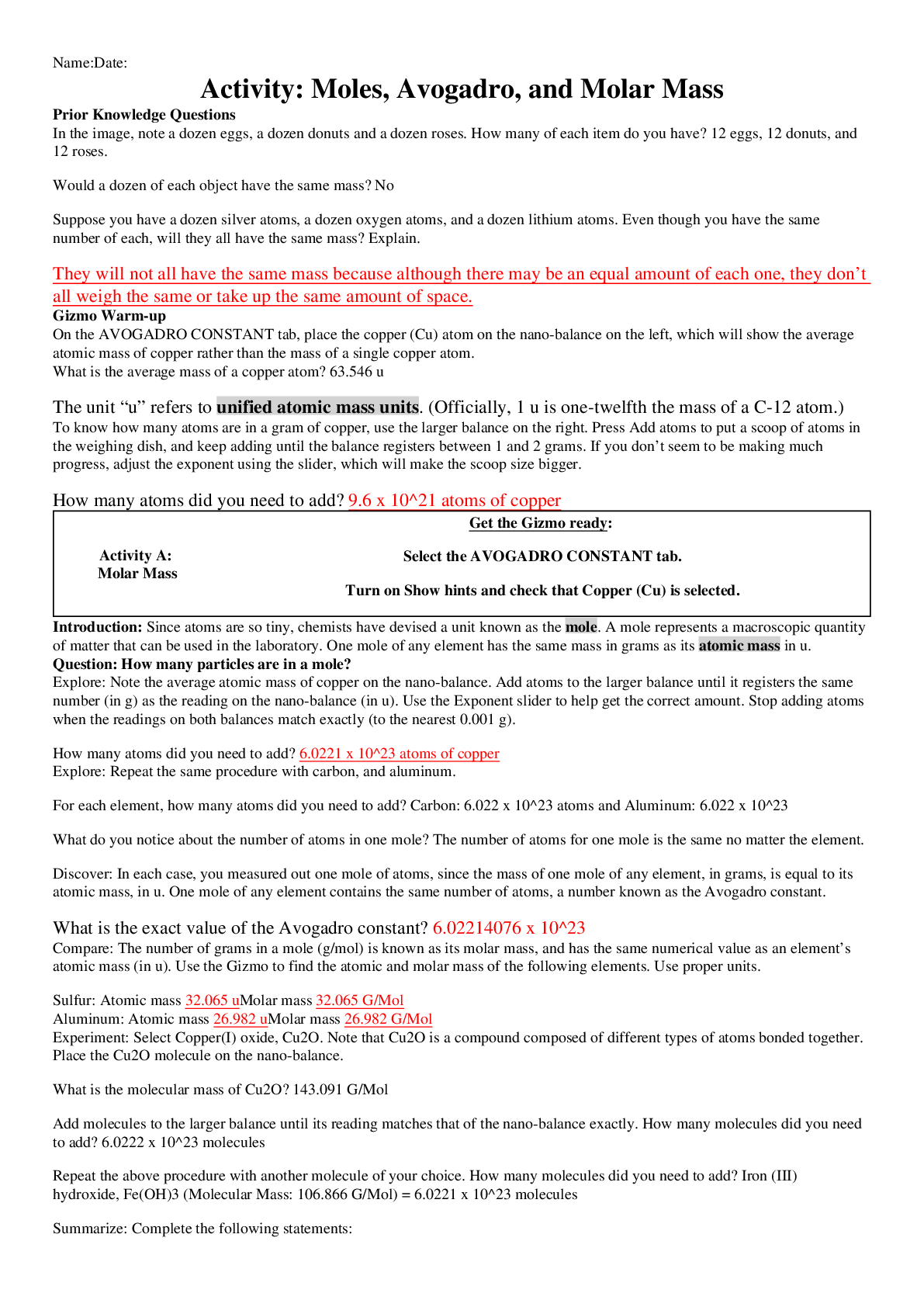
.png)

